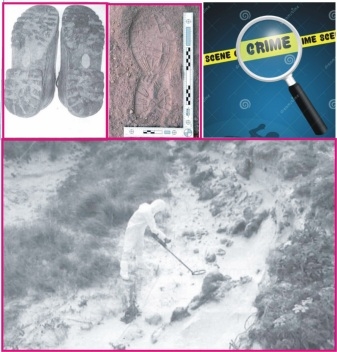
Experts have begun to entrust more on forensic science for solving some of the most puzzling crime or civil procedures nowadays. Invention of new technologies, methodologies have bent more dependency on forensic in bringing justice. Forensic science, also known as criminalistics is the application of science to criminal and civil laws, during criminal investigation, as governed by the legal standards of admissible evidence and criminal procedure. Forensic science is a combination of two different Latin words: forensis and science. The word- forensis relates to a discussion or examination performed in public. Trials in the ancient world were typically held in public and carry a strong judicial connotation. Taken together, then forensic science can be seen as the use of the scientific methods and processes in crime solving. Of the varied disciplines of forensics, forensic geology has proved quite handy in dealing some of the extreme criminal cases.
Forensic geology can be defined as the use of geologic principles and techniques to establish facts or provide evidences used in a court of law. A broader working definition includes the use of the same principles and techniques to establish facts or sequences of events regardless of whether they are used in court. Thus, the gathering and interpretation of geologic data for intelligence, espionage, and national security purposes can fall under the second definition of forensic geology. In brief it can be described as the study of evidence relating to minerals, oil, petroleum, and other materials found in the Earth, used to answer questions raised by the legal system.
Many authors, Murray and Tedrow (1975, 1991), Crelling (1998), Croft and Pye (2004) have well documented the significance of forensic geology through books, seminars and publications. The INTERPOL Soil Science Symposium in Lyons, France in 2001 became a remarkable renaissance in forensic geology and pedology.
Back dated to the mid-19th century in 1856, a Berlin based geologist Prof. Christain Gottfried Ehenberg (1795-1896) helped the local police where the silver metals of Prussian railways have been stolen by replacing silver with sand. He analysed sand samples with his microscope that had been collected from the different stations the train had passed. He was able to identify the station from where the sand must have originated. Forensic geology is believed to begin with Sherlock Holmes writer, Sir Arthur Conan Doyle. The character portrayed by Sherlock Holmes claimed to be able to identify where an individual had been by various methods, including his having memorized the exposed geology of London to such a degree that detecting certain clays on a person’s shoe would give away a locale. In 1891, Hans Gross used microscopic analysis of soils and other materials from a suspect’s shoes to link him to the crime scene. Georg Popp of Frankfurt, Germany was the first to use soil analysis for linking suspects to a crime scene during the early 1900’s.
During the second half of World War II, the Japanese military developed a plan to attack the United States with unmanned balloons carrying explosive and incendiary bombs. The balloons were designed to be self-regulating, releasing sandbags in order to gain elevation during cold nights and releasing hydrogen to loose elevation during warm days. It is believed that 9000 balloons were launched, of which an estimated 1000 reached North America. By comparing the sand to geologic maps and reports that had been published before the war, geologists suggested two possible launching sites along the northern coast of Japan. In reality, balloons were being launched from three sites. One of them was a site identified by the geologists.
A notable example of forensic geology occurred shortly after the September 11, 2001 terrorist attacks on the World Trade Center in New York City and the Pentagon in Washington, D.C. American geologists who had worked in Afghanistan were able to identify rocks in the background of a videotaped message from the terrorist leader Osama Bin Laden, and therefore the region of the country in which the message was taped.
Of the varied applications of forensic geology; forensic geophysics, geomorphology, remote sensing, geographic information system, mineralogy, etc. have elusive importance. These methods determine a material on a suspect linked to crime or not. Sometimes these methods help in demarcating a probable location from an unknown area to target the criminals or spot the crime scene materials.
One can become too vigilant towards the increasing criminal cases around the world. Forensic geology needs to be understood by the common public so that its applicability to solve crime puzzles can be brought to public domain. It will help in bringing justice in a much more effective way..



